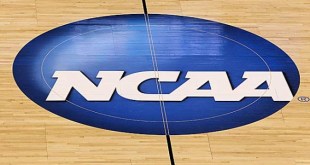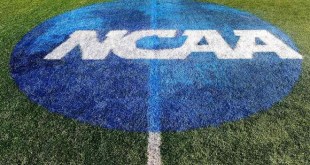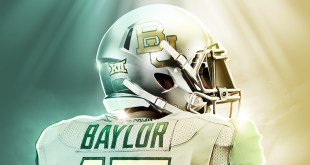The National Collegiate Athletic Association (NCAA) sets forth rules and regulations with regard to the participation of college athletes in college sports.[1] In general, the NCAA states that it is “a membership-driven organization dedicated to safeguarding the well-being of student-athletes and equipping them with the skills to succeed on the playing field, in the classroom and throughout life.”[2] As it relates to the issue of monetary compensation of college athletes, the NCAA has adopted a policy of what it calls pure “amateurism.”[3] As steadfastly stated on its website, the NCAA believes that “maintaining amateurism is crucial to preserving an academic environment in which acquiring a quality education is the first priority.”[4] As part of its definition of amateurism, the NCAA has set forth various requirements which, among other things, prohibit “salary for participating in athletics”[5] and “prize money above actual and necessary expenses.”[6] Likewise, the NCAA prohibits “a college bound athlete” from receiving compensation for a commercial or an endorsement if such athlete was chosen for such commercial or endorsement because of his or her athletic ability.[7]
Over the years and with the precipitous growth of college sports, the NCAA’s definition of “amateurism,” and by extension, the term “student athlete” has come under vigorous attack, particularly by those who believe that college athletes should be classified as “employees”[8] under the National Labor Relations Act (NLRA). The general sentiment among many of its critics was that “[t]he NCAA purposely created the term ‘student-athlete’ as propaganda, solely to obscure the reality of the university-athlete employment relationship and to avoid universities’ legal responsibilities as employers [and in] the ensuring fifty years, the NCAA, colleges, and universities have profited immensely from the vigorous defense and preservation of this myth.”[9] Furthermore, those same critics point out that the NCAA and its member universities are “part of a massive commercial enterprise, generating billions in revenue and priceless publicity for universities. Many non-players share in the fruits of the players’ labor, including coaches and administrators. Head coaches are often the highest compensated employees of their universities, paid millions in salary and benefits.”[10]
On the other hand, there are many who point to the fact that the overwhelming majority of college sports are not profitable. The truth is that only a fraction of university athletic programs are lucrative, with football and basketball exclusively driving profitability.[11] These same proponents believe that “[s]tudents are not professional athletes who are paid salaries and incentives for a career in sports. They are students receiving access to a college education through their participation in sports, for which they earn scholarships to pay tuition, fees, room and board, and other allowable expenses. Collegiate sport is not a career or profession. It is the students’ vehicle to a higher education degree. This access is contingent upon continued enrollment, participation in the sport for which they received the scholarship, and academic eligibility. The NCAA Student Assistance Fund can be used to help those student-athletes who have unusual needs in excess of the usual cost of attendance. A high percentage of student-athletes graduate without the burden of student loans, which most other students accumulate.”[12]
For whichever side of the argument one advocates, the unequivocal certainty is that the landscape of college athletics is set for a seismic paradigm shift as the concept of pure “amateurism” now appears to be illusory and anachronistic. As former NCAA Executive Director Walter Byars aptly stated, “Amateurism is not a moral issue; it is an economic camouflage for monopoly practice.”[13] Too much money is now involved for the NCAA to cling to the notion that sports are simply there to “enhance the educational experience.”[14]
Admittedly, the concept of paying college athletes on a pure “free-market” basis creates a crater full of problems of its own. Namely, do you only pay athletes who play revenue generating sports? Do you even support non-revenue generating sports? Or do you eliminate them completely and focus your financial resources on just football and basketball? If so, how do you comply with Title IX of the Equal Opportunity Act (“Title IX”)? What happens to Division II, Division III and non-Power 5 Conference[15] athletic programs? Should they be obligated to pay their athletes considering that their athletic programs generally operate at a substantial loss? These are just some of the difficult questions that would need to be answered – and that would be just scratching the tip of the iceberg.
A Proposed Solution
“Stipend System” with Non-Revocable Scholarships
A possible “middle-ground” solution to this quagmire, at least on an interim basis, should begin with the implementation of a “stipend system” as a starting point. Each student-athlete would receive an agreed-upon stipend amount over and above his or her “cost of attendance” grant-in-aid scholarship to use as he or she sees fit. This stipend would be equal among all student-athletes irrespective of whether he or she participates in a revenue generating sport or not. In addition to the implementation of the proposed “stipend system”, the current one-year renewable grant-in-aid scholarship system would need to be overhauled. Guaranteed mandatory grant-in-aid scholarships should extend to the graduation of the student athlete and should not, in any way, be renewable or contingent on the student athlete’s performance on the field or whether the student athlete suffers an injury. That said, however, the student athlete would be expected to meet minimum academic standards and abide by team rules and an overall code of conduct.
Healthcare Coverage/Injury Compensation
Arguably the most important facet of any proposed reform would entail providing healthcare coverage for the student athlete. Such a benefit would include, among other things, coverage for health care services for long term injuries and/or latent injuries whose symptoms and effects may show up much later in life (i.e., Chronic Traumatic Encephalopathy (CTE)). Additionally, a compensation system should be implemented in the event a student athlete is severely or “gravely” injured or permanently disabled while participating in their respective sport.
Trust Fund for Revenue Generating Sports
Sometimes in our efforts to establish equality we lose sight of what is fair. Intuitively, it stands to reason that student athletes that participate in high revenue generating sports should receive at least a piece of the windfall revenue universities are able to obtain. One possible approach to partially filtering down some of this revenue to the student athlete would entail the creation of a trust fund whereby a percentage of the university’s revenue each year is held in trust pending completion of the student athlete’s collegiate career. Upon completion of the student athlete’s college career, he or she would have access to a portion of the funds held in these trusts. Of course, a noteworthy caveat would be that access to funds from these trusts would only be available to student athletes who participate in revenue generating sports and would not be available to Division II or Division III student athletes or student athletes who participate in non-revenue generating sports. In this sense, not every student athlete would be treated the same, but rather they would be treated fairly based upon the economic benefit and revenue generated for the university.
While proposing the idea of the trust fund for student athletes may work in theory, careful consideration must be given to whether such a structure complies with Title IX. Generally, based on a review of applicable case law, Title IX, within the context of college athletics, appears to apply to discrimination as it relates to the formation of athletic teams and the provision of grant-in-aid athletic scholarships.[16] As a matter of fact, courts appear to have upheld the notion that greater pay is justified based on “greater revenue generating abilities.”[17] “For example, in Stanley v. University of Southern California, 13 F.3d 1313 (9th Cir. 1994), the U.S. Court for Appeals for the Ninth Circuit noted that it may be permissible for the University of Southern California to offer higher pay to its men’s basketball coach because the men’s team generated far greater annual revenues.”[18] Based on an expansive reading of the Stanley Case, it would appear by logical extension that setting aside monies in trust solely for student athletes participating in revenue generating college sports would not contravene Title IX in any way.
Allow the Student Athlete to Benefit from his/her “Right of Publicity”
The final piece of this puzzle relates to a student athlete’s ability to use his fame and unique athletic skill to capitalize on commercial opportunities while participating in college athletics. Currently, as part of signing a “letter of intent” to play college athletics, a student athlete signs a waiver known as a Student Athlete Statement allowing the University to sell generic jerseys with their number and to use their likeness in promotional activities.[19] Additionally, a student athlete is prohibited from entering into any endorsement deals or from profiting from his or her autograph, likeness, etc.[20] As part of any reform, it would stand to reason that the NCAA should eliminate the restriction it places on each of its student athletes to capitalize on their own image. Of course, as many commentators already know, resolution of this issue on the legal front is still quite fluid. On appeal of the Ed O’Bannon v. NCAA[21] U.S. District Court verdict, Judge Jay Bybee, writing for the majority of a three-judge panel of the 9th Circuit, expressed his discomfort that “offering [student-athletes] cash sums untethered to educational expenses”—such as $5,000 a year for NIL [name, image, and likeness] rights—would transform NCAA sports into minor league status.”[22] Nonetheless, it appears that the wheels of change are now in motion and, at the very least, there is enough momentum to have the NCAA adopt what is known as the “Olympic Model” whereby each athlete is able to seek compensation by way of sponsorships and endorsements.[23]
Conclusion
The foregoing are a general set of proposals meant to address the challenges associated with the ever-changing landscape of college athletics. Admittedly, some of the proposals represent a foundational sea-change for those constituting the most ardent advocates of current NCAA policy. Undeniably, these changes would provide a shock to the system. That said, however, it is imperative that policies adjust over time to comport to the societal and, more importantly, the economic realities of today. The NCAA should do its best to stop living up to its reputation as an organization that moves and adapts at a glacial pace.
[1] This is a guest post by Spyros Arsenis. Spyros represents a diverse set of clients in the sports industry. His current practice also includes corporate and real estate finance. Spyros is a graduate of St. John’s University School of Law where he served on the St. John’s Law Review. Spyros has also earned a M.S. in Financial Markets in Trading from the Illinois Institute of Technology.
[2] See About the NCAA, NCAA.org, http://www.ncaa.org/about (last visited March 9, 2017).
[3] See Amateurism, NCAA.org, http://www.ncaa.org/amateurism (last visited March 9, 2017).
[4] Id.
[5] Id.
[6] Id.
[7] See Frequently Asked Questions, NCAA.org, http://www.ncaa.org/about/frequently-asked-questions-about-ncaa (last visited March 9, 2017).
[8] See National Labor Relations Act of 1935, 29 U.S.C. §§ 151-169.
[9] See Robert A. McCormick & Amy Christian McCormick, The Myth of the Student-Athlete: The College Athlete as Employee, 81 Wash. L. Rev. 71, 86 (2006).
[10] See Reply Brief for Petitioner College Athletes Player Association at 1, Northwestern University v. College Athletes Players Association (CAPA), Case 13-RC-121359 (National Labor Relations Board).
[11] See Horace Mitchell, Students Are Not Professional Athletes, U.S. News (Jan, 6, 2014), http://www.usnews.com/opinion/articles/2014/01/06/ncaa-athletes-should-not-be-paid.
[12] Id.
[13] See Ellen J. Staurowsky, “Should College Athletes Get Paid” Is The Wrong Question, The Atlantic (Sept. 9, 2011), http://www.theatlantic.com/entertainment/archive/2011/09/should-college-athletes-get-paid-is-the-wrong-question/245312/.
[14] See “The Myth of the Exploited Student-Athlete.” Journal of Intercollegiate Sport at 139.
[15] The Power 5 Conferences include: The Atlantic Coast Conference (ACC); Big Ten Conference (Big 10); Big Twelve Conference (Big 12); Pacific Twelve Conference (PAC 12); South Eastern Conference (SEC).
[16] See Mark Edelman, When it Comes to Paying College Athletes, Title IX is Just a Red Herring, Forbes.com (Feb. 14, 2014), http://www.forbes.com/sites/marcedelman/2014/02/04/when-it-comes-to-paying-college-athletes-is-title-ix-more-of-a-red-herring-than-a-pink-elephant/.
[17] Id.
[18] Id.
[19] See Jeremy Bernfeld, Who Can Profit Off a College Athlete’s Image? Not the Athlete, WBUR.org (May 24, 2014), http://onlyagame.wbur.org/2014/05/24/image-ncaa-athlete-profit.
[20] Id.
[21] 7 F. Supp. 3d 955 (N.D. Cal. 2014), aff’d in part, vacated in part, 802 F.3d 1049 (9th Cir. 2015).
[22] http://www.si.com/college-basketball/2015/09/30/ed-obannon-ncaa-lawsuit-appeals-court-ruling
[23] See http://www.cbssports.com/collegefootball/writer/jon-solomon/24580273/ncaa-critics-offer-ways-to-pay-college-players
 The Sports Esquires Putting Sports on Trial
The Sports Esquires Putting Sports on Trial




